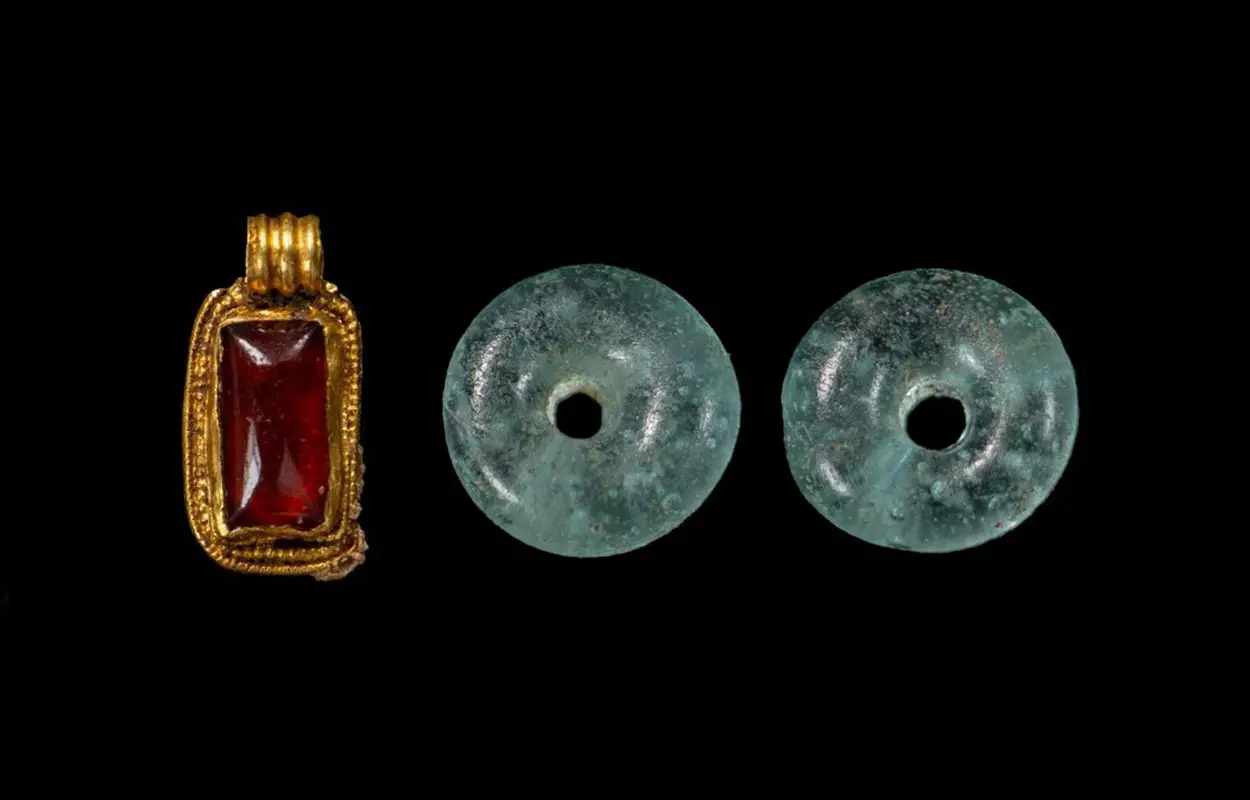Wessex Archaeology has uncovered an Anglo-Saxon cemetery during excavations for Viking Link, a submarine power cable connecting the United Kingdom and Denmark.
Excavations identified traces of a Bronze Age ring ditch, in addition to the burials of 23 individuals who were found with a range of funerary objects such as knives, jewellery, and ceramic vessels.
An analysis of 250 of the discovered objects suggest that the cemetery was in active use from the 6th and 7th centuries AD.
Among the burials is that of a teenage girl and a child who were both found placed on their sides. The girl was buried with two gold pendants set with garnets, an annular brooch, two blue glass beads, and a silver pendant with an amber mount which was found around the girls head or chest.
The discovery is featured on BBC’s Digging for Britain this January, with Professor Alice Roberts, stating: “The middle of the first millennium in Britain is a mysterious period – historical sources are thin on the ground.”
“So any archaeological discoveries from this time are precious and help us to understand what was happening. These burials included some beautiful grave goods, but I can’t wait to find out more about the individuals themselves, with post-excavation analysis of the bones and teeth,” added Professor Roberts.
The researchers plan to conduct an isotopic and DNA analyses of the skeletal remains to help identify the familiar relationships and broader genetic links between all the burials in the cemetery, as well as provide more information about the movement of people in wider society and their diet.
Jacqueline McKinley, Principal Osteoarchaeologist, Wessex Archaeology, said: “Although many Anglo-Saxon cemeteries are known in Lincolnshire, most were excavated decades ago when the focus was on the grave goods, not the people buried there. Excitingly, here we can employ various scientific advancements, including isotopic and DNA analyses.”
Header Image Credit: Wessex Archaeology





